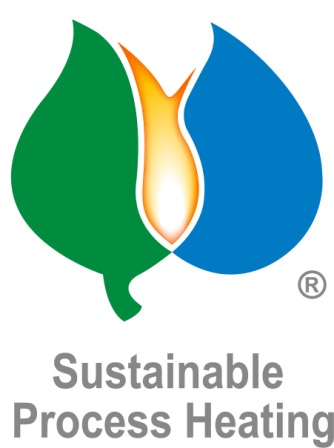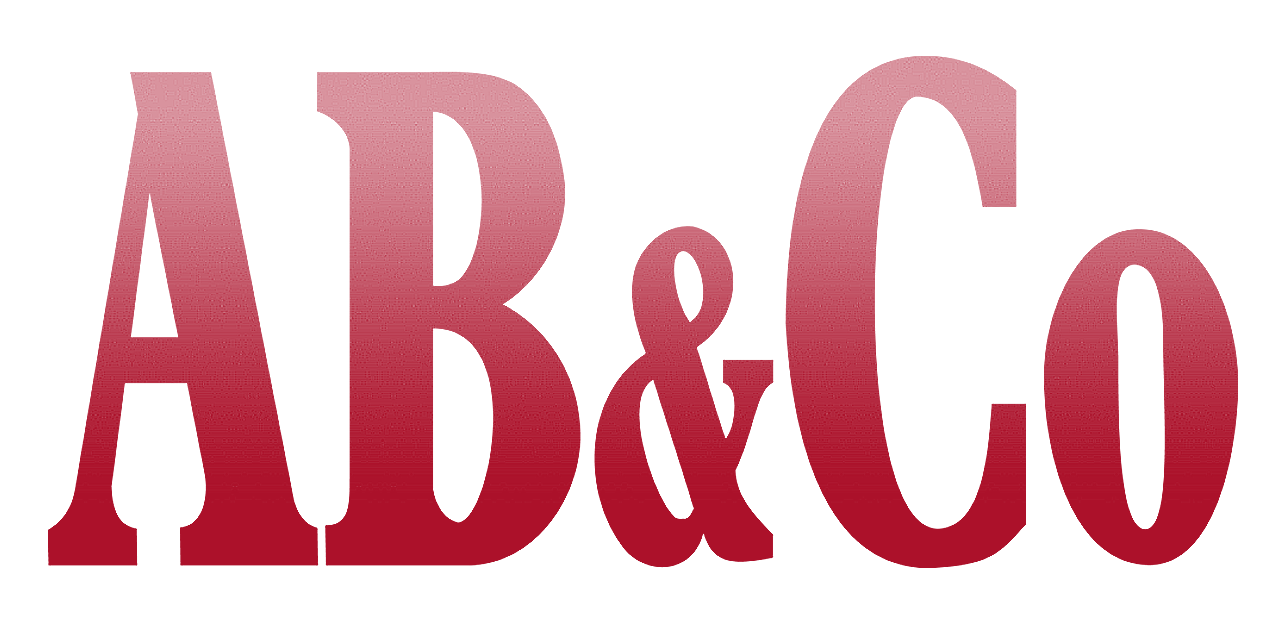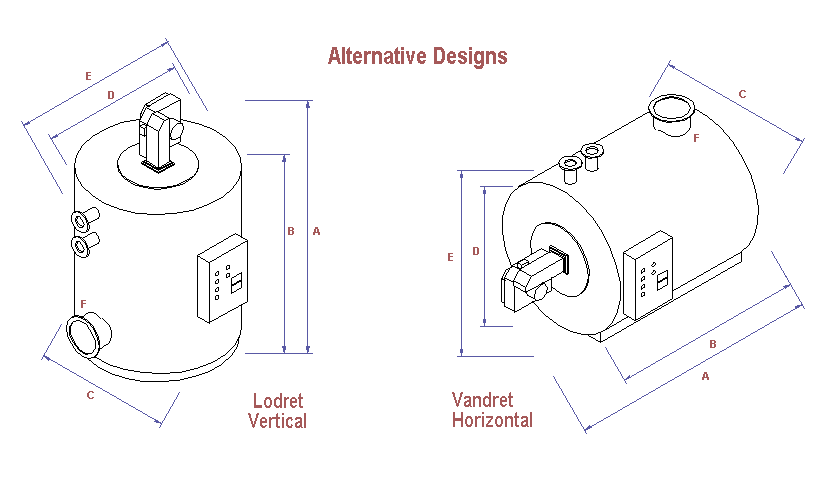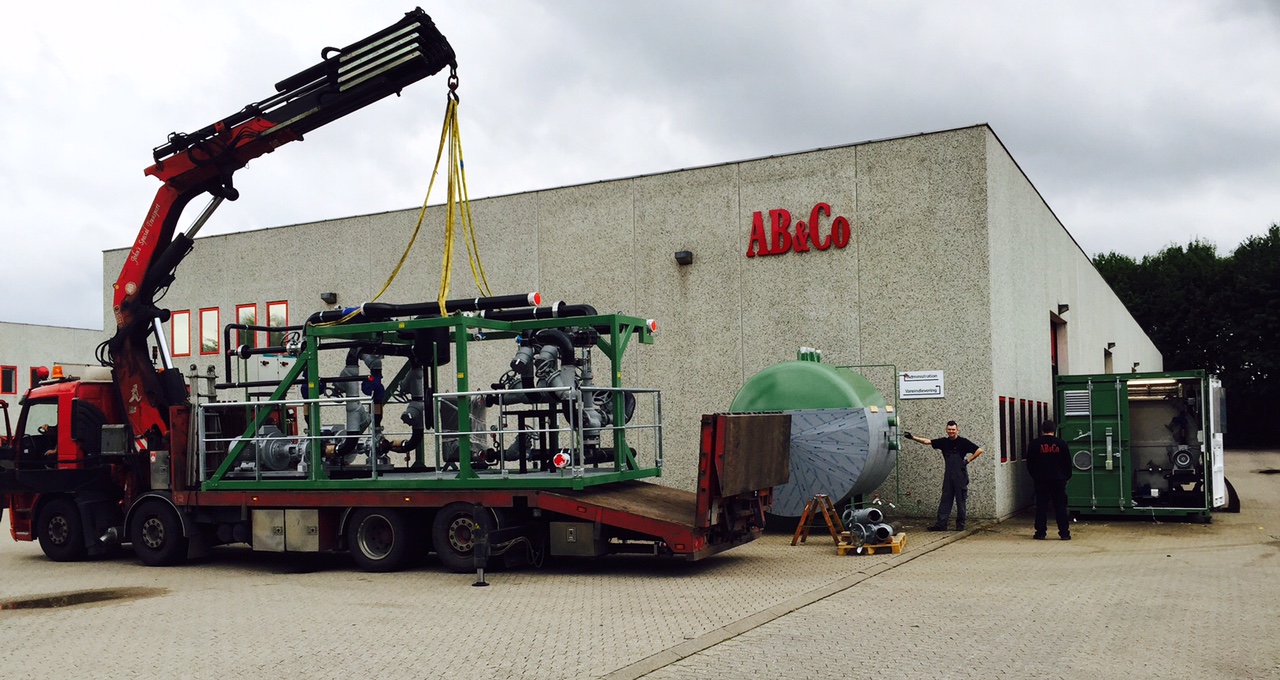|
INTRODUCTION
AB&CO Thermal Oil Heaters (also called Thermal Oil Boilers, Thermal Fluid Boilers,
Hot Oil Units or Diathermic Heaters) are developed and designed especially for demanding process
heating operations where no compromise on quality are accepted and
where reliability is the key word.
The heater solutions from AB&CO are not characterised by low purchase price -
but instead low
over-all costs including low maintenance and operational costs,
and long life-times.
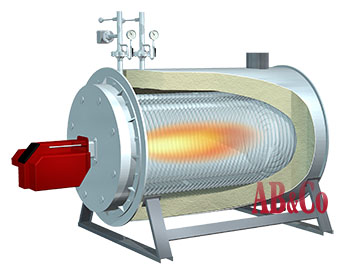
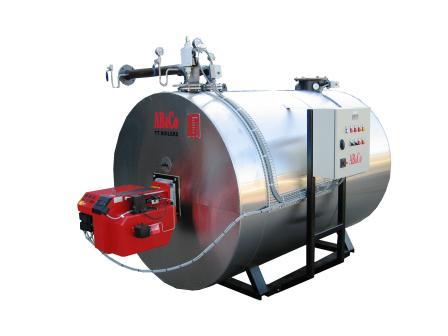
Oil & Gas-fired Unit
Consequently
the AB&CO heaters are made of first class material and components, without any compromise on quality. The
pressure part are designed as standard between 10 bar and up to 40 bar pressure
(although
operation often are atmospheric and unpressurised).
The heaters for thermal
oil or heat transfer fluid (HTF)
are delivered as complete and fully equipped units with all necessary armatures, instrumentations and safety features.
The thermal oil heaters are
delivered as oil-fired, gas-fired, for dual fuel or electrical heated.
Other customised options are numerous and include free choice of horizontal
alternatively vertical types.
The models are designed for minimum 10 bar pressure with capacities
in normal range up to 3000 kW, - and up to 10.000 kW on request.
THE BENEFITS OF USING OIL
Water and steam are typically used as
heat carriers in heating systems. But at high temperatures
which is often required in process heating systems, water and steam requires a
corresponding high operating pressure. Consequently high temperature heating
systems with water and steam can be very
controversial and expensive - both in relations to personal safety issues, economy,
design and projecting.
In
Thermal
Oil Heating Systems, this special oil-based Heat Transfer Fluid
(HTF) is used instead of steam or water as the heat carrier. With this fluid it is quite simple to achieve operating temperatures up to
300°C even at atmospheric pressure. Comparing this to water and steam, it would
require a pressure above 85 bar
to obtain 300°C operating temperature.
There are several advantages by using
the oil-based heat transfer fluid - often you compare
Thermal Fluid versus Saturated Steam. Here the most obvious advantages are:

|
High operating temperatures up to 300°C
at atmospheric pressure |
 |
Optional temperature level
set-points |
 |
No pre-treatment of boiler feed water |
 |
No heat loss due to hot
condensate and flash steam |
 |
No risk of corrosion and no
risk of freezing damages. |
 |
Low maintenance costs |
 |
Quiet in operation (no steam
stroke and flash steam noise) |

|
Easy to operate (does not
require
steam boiler certified staff) |
EXTENT OF DELIVERY
The
thermal oil heaters can be
delivered in horizontal design (with low height), or in vertical design (occupying limited
floor space).
See the sketches below.
The heater units are delivered
thermal insulated and with heat shields. The enclosure is stainless steel
cover sheets. The unit design includes burner (or electrical heating elements), armatures, instrumentation, safeties and
control panel - and with full documentation including the necessary certificates.
Accessories can be chosen
in order to complete the thermal oil heating system. Many of these
accessories can be build on a complete skid-mounted unit - or the can
be build into a container-solution.
AB&CO also deliver complete thermal
fluid
heating systems (read more about the system solutions in column on the
right column).
SPECIAL DESIGNS
Beside the standard execution,
the heaters can be delivered in e.g. following variations:

|
Electrical
heated |

|
Flue gas heated |

|
Steam heated |

|
Combination of heat sources |

|
Container-solutions |

|
Skid-mounted units |

|
Complete heating systems |

|
Parts made in
stainless steel |

|
Customised design - special
requests |
|
CONSTRUCTION & THERMAL DESIGN
The oil/gas-fired heaters from AB&CO are made with an internal arrangement
of winded-up tube coils made of 3.1/PED-certified steel pipes.
The oil-based Heat Transfer Fluid
(HTF) is heated gradually to the operational temperature during the
circulation inside the coiled up tubes - while the heat is
transferred to the HTF. Firstly it is done as radiant heat in the combustion chamber, where the inner
cylindrical tube coil and a flat tube coil forms the chamber wall and the bottom
respectively (consequently refractory concrete is avoided). Secondly the
heat is transferred as convection heat from the combustion gasses (consequently
being cooled) through the tube wall to the HTF. This takes place in the outer surrounding convection part
i.e. the outer tube coil, as the gasses pass the space gab between
the two tube coils, and thereafter the outer tube coil and shell. The thermal design ensures
both a defined and constant velocity of the thermal oil, but also a modest volume of the thermal
oil
relative to the size of the heater. The coil design allows unlimited thermal
expansion caused by the high
fluid temperature.
The heater and the complete thermal oil heating system in general are
constructed and equipped according to the recognised and comprehensive
German standard DIN 4754, while atmospheric vessels and pressure vessels are made according the
European regulations including the pressure vessel code PED 2014/68 EU, and according to all relevant EN-norms.

Container
Solutions
- closed type container
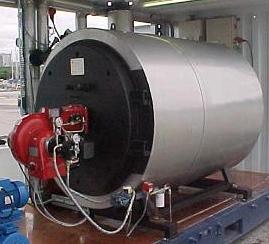
Container
Solutions
- open type container
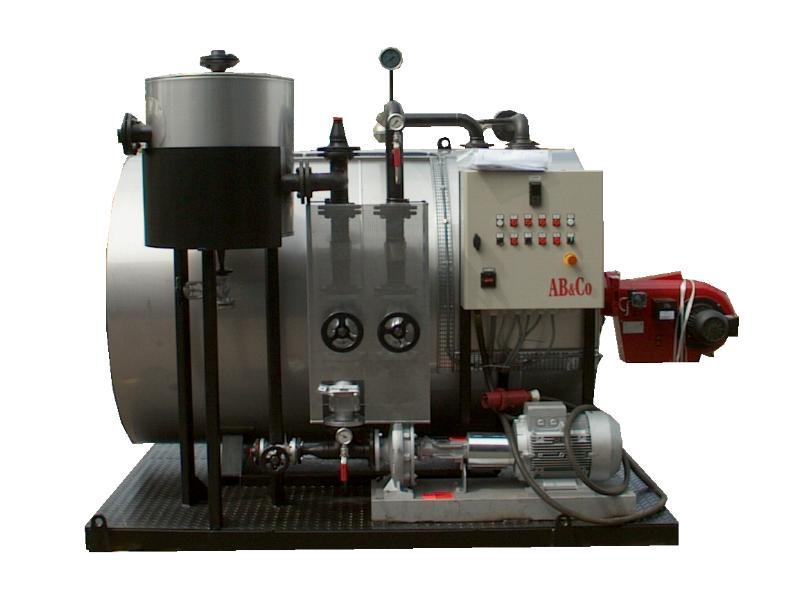
Horisontal
Skid-mounted Unit
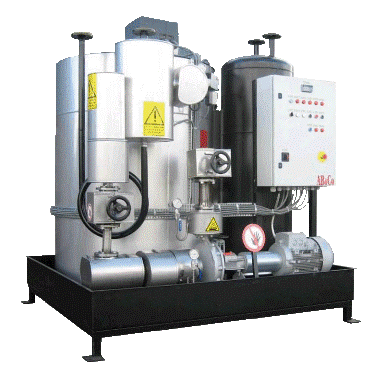
Vertical Skid-mounted Unit
The electrical heated thermal oil heaters are build-up as a battery of one or several pressure
vessel modules equipped with with conventional tube type or pull-out ceramic heating elements.
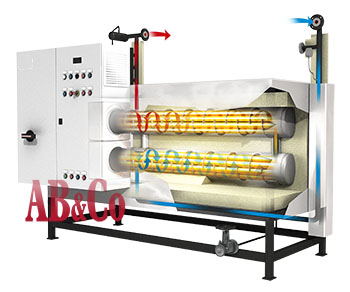

Electrical Heated Unit
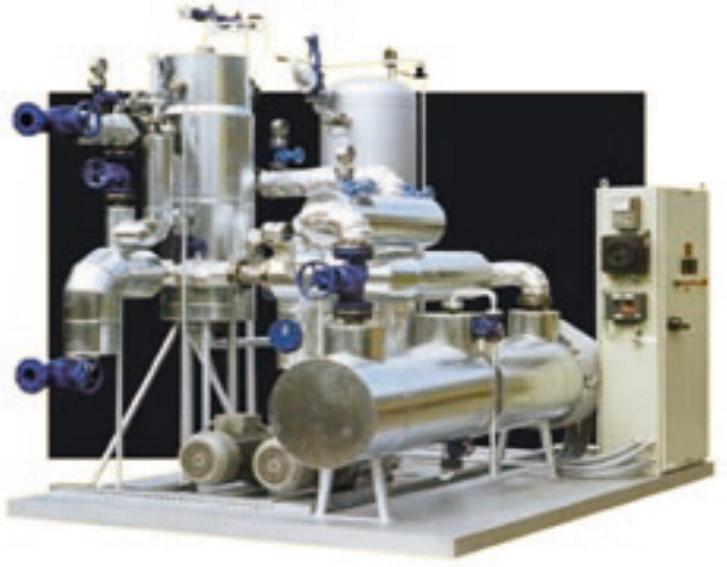
Electrical Heated
Skid-Mounted Solution
These electric thermal oil heaters are not only designed as
heaters, they are also calculated and designed as heat exchangers
involving - for each project/application/task - individual heat transfer and flow calculations on
the heater elements, and their surfaces and geometry.
This is done in
order to control the surface temperature of the electrical heating
elements and thereby preventing critical temperature in both heating
elements and the oil film of the HTF (preventing element blow-off and
oil cracking respectively).
All thermal oil heaters are carefully checked, controlled and functional tested prior to dispatch from the
workshop.
|
BURNERS & ELECTRIC HEATING ELEMENTS
The oil/ and gas-fired thermal
oil heaters are equipped only with international recognised high-quality burner brands -
adapted to operation on gas, light fuel oil, heavy fuel oil or combinations (dual fuel)
and even fish oil and solid fuel.
Individual demands for special burner designs can
be meet and adapted in the heater design - for instance burners for
combustion of bio-gas and other low caloric or even corrosive fuel gasses.
The electrical heated units are delivered in two options. The conventional electrical tube
heating elements are used typically for low temperature applications and the
costs for these are correspondingly low. The
elements are especially designed for demanding tasks which means a.o. using
the special and extreme high temperature resistant Incoloy 825 alloy.
For other applications, low
and easy maintenance might be an important demand. In that case it can be recommended to use full
welded steel tube, where the inner heating wires place in ceramic elements
can be pulled out, without emptying the heater for oil.
The engineers at AB&CO calculate the optimum heat load in the heater individually i.e. for
each task, - ensuring that the film temperature of the thermal oil is never
exceeded even during stop and start.
FLUE GAS COOLERS - ECONOMISERS
Whenever it might not be possible to use electrical heating using electricity from wind
power, nuclear power or water power, - the environmental challenge is to
use oil and gas-fired solutions, but at the same time to reduce the fuel
consumption and thus the emission.
In this context the low flue
gas temperature is the
key word. The heat recovery is done by utilisation of the
quite large amount flue gas heat
recovered in
flue gas coolers also known as
economisers. AB&CO offer complete systems that involves high efficiencies and at the same time very low pay-back times.

Economisers can be delivered as build-on to the oil
or gas-fired heater, for heating external colder fluid e.g. water.
Alternatively the
thermal oil heater can be made as a flue gas heat exchanger - a recuperator
where the external heat source is hot flue gas.
CO2-REDUCTION,
HEAT RECOVERY
AND OTHER ENVIRONMENTAL ISSUES
Heat recovery - for
instance as described above - and
other environmental considerations have always been a standard topic at
AB&CO, long before
these became a official worldwide protocol. A lot of money is available by
thinking "green". For that reason AB&CO offers consultant services.
This offered arrangement has
become very popular worldwide. See more about this
at
AB&CO · CONSULT
THE HEAT TRANSFER FLUID
'THERMAL OIL'
The circulating heat
transfer fluid, also known as the thermal thermal oil needs to be
correct chosen. Compromise on this issue can easily result in huge problems
- but economical and with respect to ensure personal safety. It cannot be
emphasized strong enough how fatal bad, old and and inappropriate thermal
oil can be for the thermal fluid heating system.
Use a quality brand of
thermal oil and make sure that this fluid correspond how the
heating system is operated.
An important maintenance detail is that every 6 - 12 months, a sample should be taken from the system and send to a
qualified laboratory (make sure that they know about thermal fluid systems
and what traces they should look for in the sample) or directly to AB&CO.
Due to this important
issue, AB&CO has established a department dealing with thermal fluid supply
and sample analysis:
It is
recommended to use a non fouling, high temperature resistant thermal oil
for the applications as decribed here as the
AB&CO
Heat Transfer Fluid.
THERMAL OIL SYSTEM SOLUTIONS
A correct and safe system design is very important for high temperature
systems. This can be ensured by using
AB&CO as system supplier of the
whole system.

The engineers of AB&CO will design the heating
system in a close dialog with the customer and/or the contractors. Visits on
site can be provided in connection with kick-off meeting, commissioning and start-up.
AB&CO have 20 years experience with thermal oil heating (hot
oil) solutions world-wide - both new installations or modified systems.
Complete
Thermal Fluid Heating Systems
with heaters, heat exchangers, tanks, pumps,
armatures, instrumentations and piping can be delivered as package solutions
and as skid-mounted units - individually designed according DIN4754.
Consulting
Assistance on design of systems and parts hereof,
modification and trouble-shooting within thermal oil heating systems, can
provided on request by AB&CO · CONSULT, who have more than 25 year
experience working with thermal oil heating.


More info about
the 'R&D Workshop'
|
